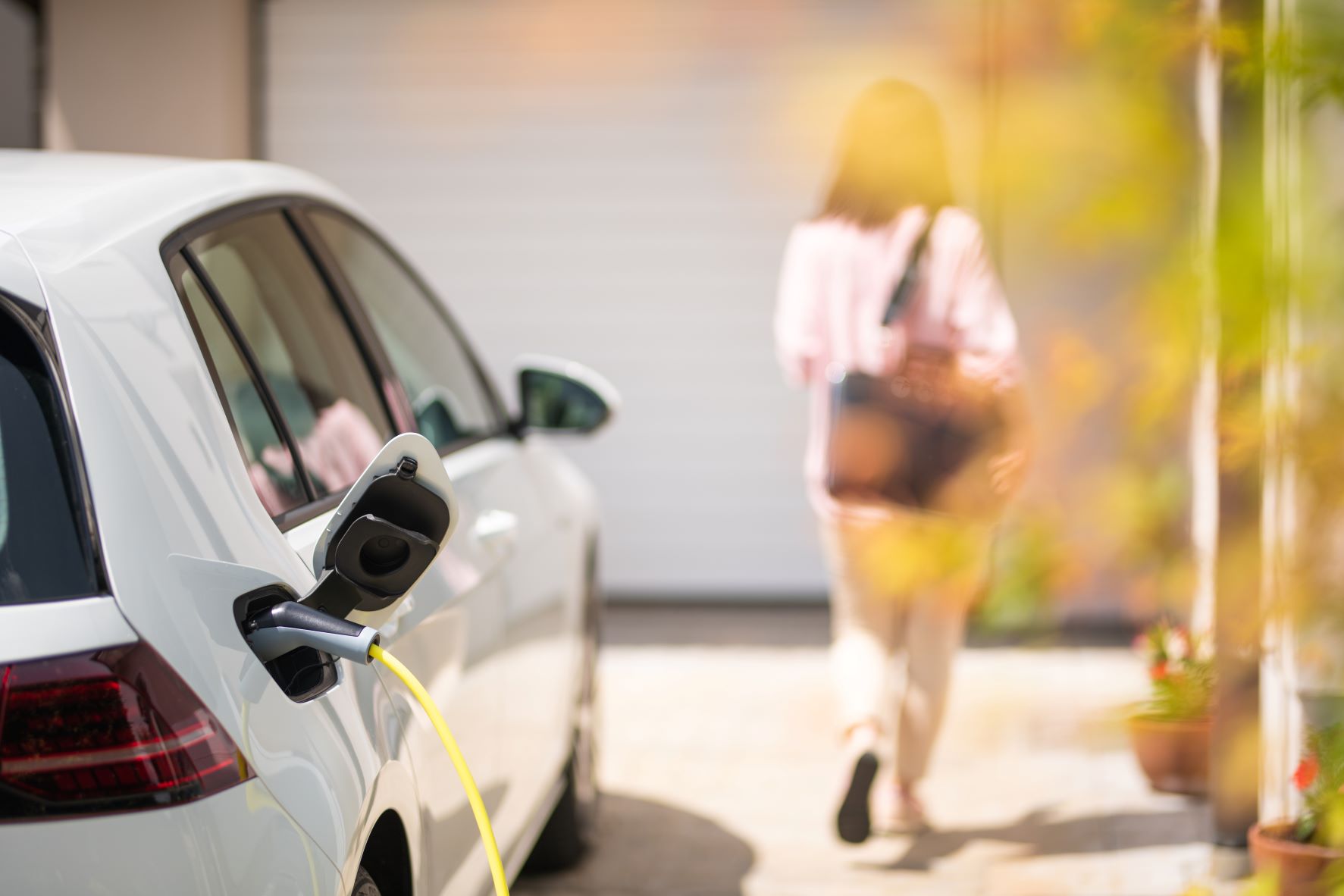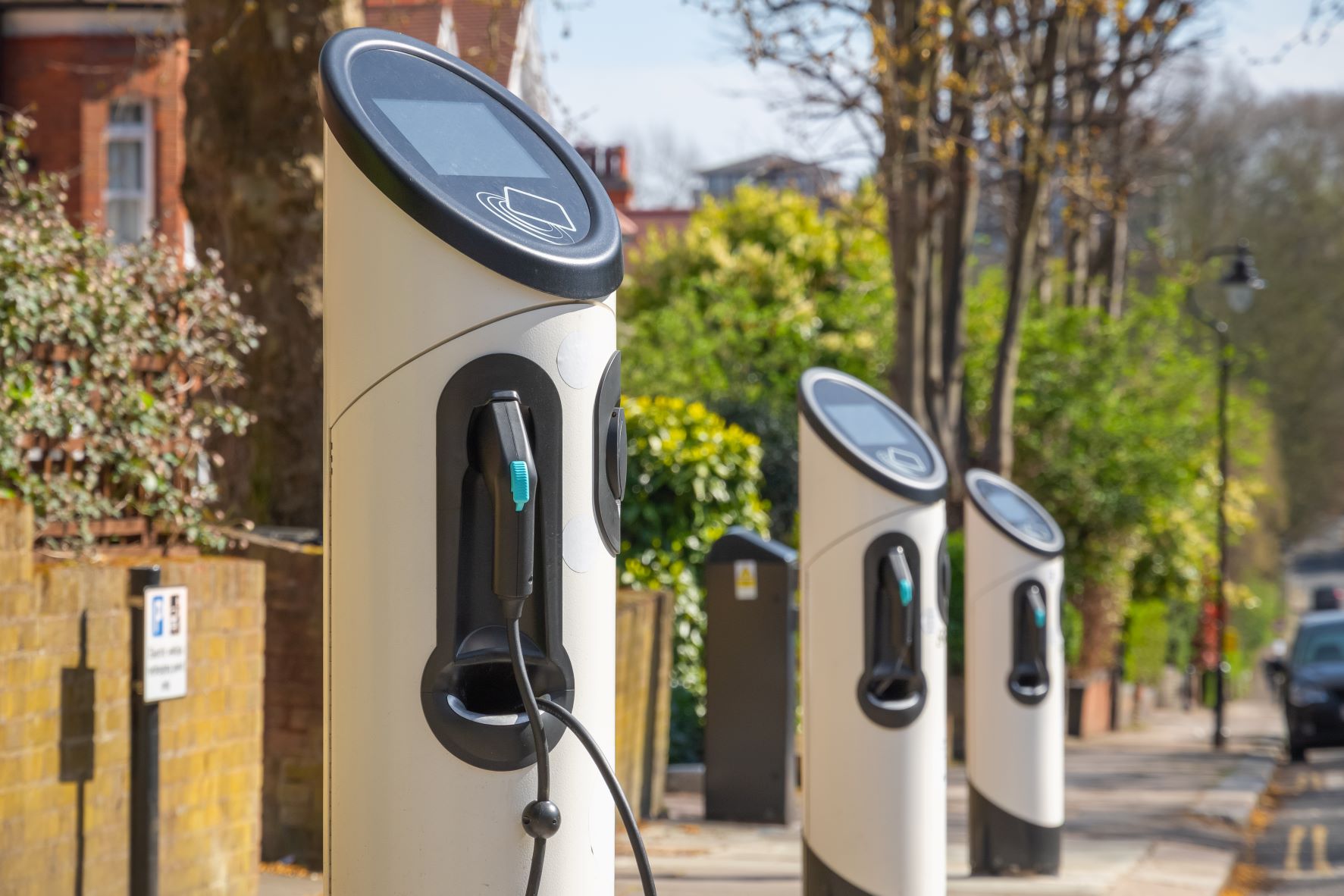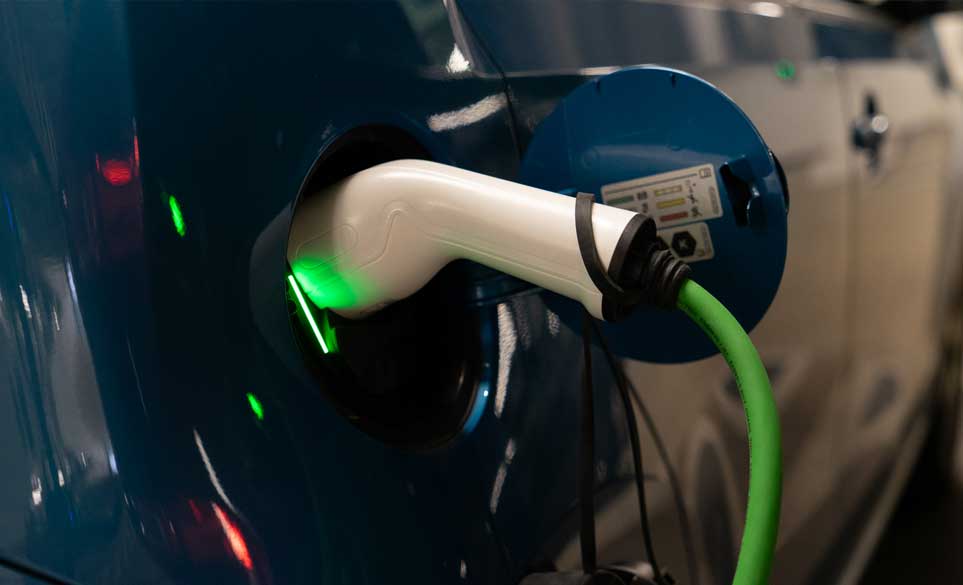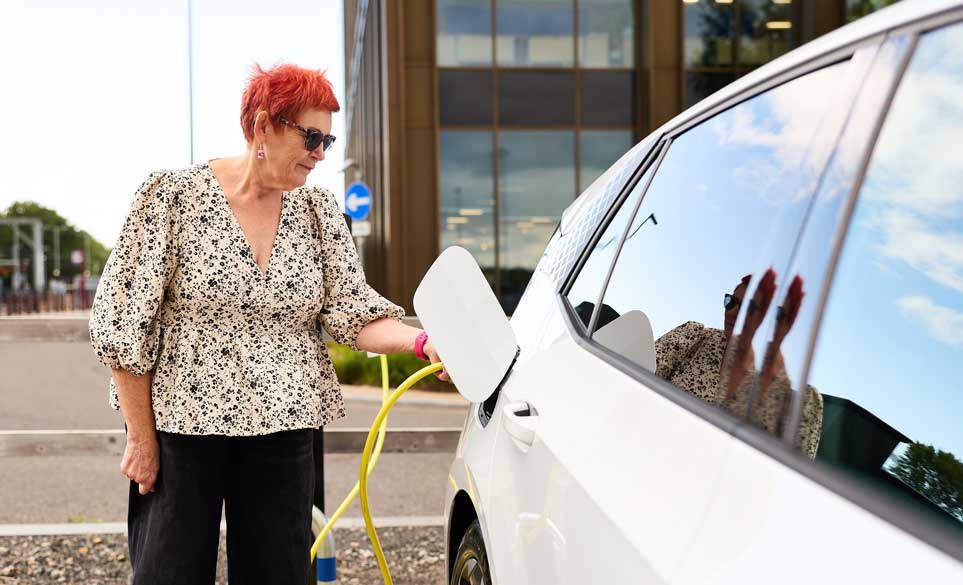The government’s decision to implement the ban on new cars that use an internal combustion engine (ICE) by 2035 means that electric vehicles (EVs) are never far from the news.
There’s now a much wider choice of EVs for you to choose from for your next brand-new car. There’s also a range of home charging options to look at too, whether you own or rent your home and whether you park it on public roads or not.
New-build houses with associated parking spaces are obliged to include an EV charging point and grants are available to help with the cost of installing different kinds of chargers, depending on your eligibility.
We’re here to help you explore which of these chargers is the best option for you, if you drive an EV and are interested in home charging.
Wall boxes
It’s possible to charge your new EV with a standard three-pin plug, but it’s a long process. Wall-mounted charge boxes offer a much greater degree of usability and efficiency to drivers with off-road parking at home.
Wall boxes come in a range of capacities and incentives for the user. From a simple 3.6kW charger to more powerful devices that can use solar energy, you’re sure to find the right one to fit your requirements.
Before you begin the process of installing your wall box charger, you’ll need to conduct a site survey to make sure your choice of charger is compatible with your house. Many wall box installers can offer this service as part of a package.
Installing wall box chargers
Once you’ve received your home point charger from your supplier, you can arrange for an installer to drill through the exterior wall and connect the box to the mains.
Remember, if you’re renting, you will need to seek your landlord’s permission before installing the charger. In fact, your landlord can apply for a grant to cover up to 75% of the cost of purchasing and installing a charge point, up to the value of £350.





